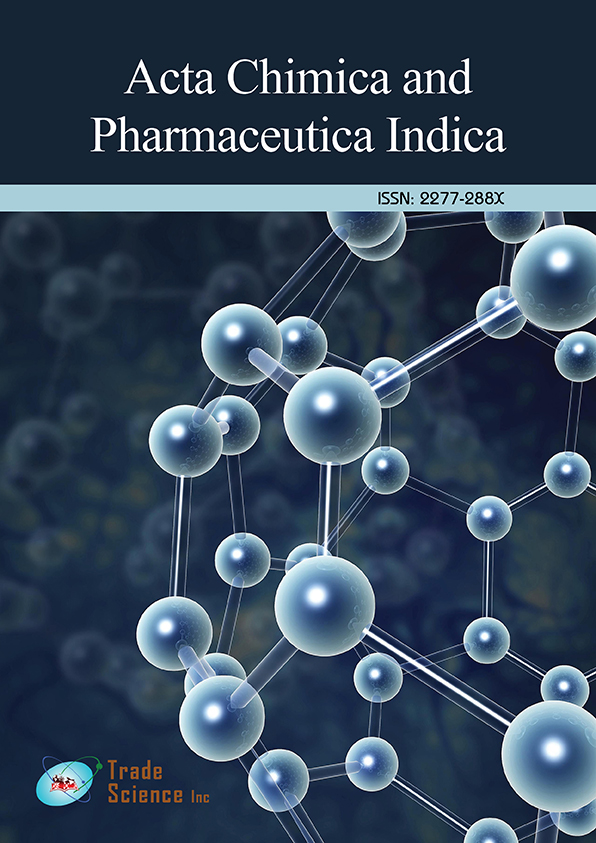Perspective
, Volume: 13( 4) DOI: 10.37532/2277-288X.2023.13(4).214Checkerboard Method for In Vitro Synergism Testing of Three Antimicrobials against Multidrug-Resistant and Extremely Drug-Resistant Mycobacterium Tuberculosis
- *Correspondence:
- Montacer SaoDepartment of Tuberculosis, Shanghai Pulmonary Hospital, Germany, E-mail: Saomontac88@gmail.com
Received: October 01,2023, Manuscript No. tsacpi-24-116872; Editor Assigned: October 05,2023, Pre-QC No. tsacpi-24- 116872(PQ); Reviewed: October 20,2023, QC No. tsacpi-24- 116872(Q); Revised: October 25,2023, Manuscript No. tsacpi-24- 116872(R); Published: October 29,2023. DOI: 10.37532/2277-288X.2023.13(4).214
Citation: Sao M. Checkerboard Method for In Vitro Synergism Testing of Three Antimicrobials against Multi Drug Resistant and Extremely Drug Resistant Mycobacterium Tuberculosis. Acta Chim Pharm Indica 2023;13(4):1-2.
Abstract
Multi Drug Resistant (MDR) and Extremely Drug Resistant (XDR) Mycobacterium tuberculosis strains pose a significant threat to global public health. The need for effective treatment strategies is imperative. This research explores the application of the checkerboard method for in vitro synergism testing of three antimicrobials against MDR and XDR Mycobacterium tuberculosis. The results demonstrate the potential of combining multiple antimicrobials to enhance therapeutic efficacy and combat drug-resistant tuberculosis.
Keywords
Mycobacterium tuberculosis; Multi drug resistant
Introduction
Multi Drug Resistant (MDR) and Extremely Drug Resistant (XDR) strains of Mycobacterium tuberculosis have emerged as a critical public health concern, complicating the global effort to control Tuberculosis (TB). The conventional treatment regimens often fall short in effectively combating these drug-resistant strains. Hence, there is a pressing need to explore alternative strategies to improve treatment outcomes. One promising approach is the synergistic use of multiple antimicrobials to enhance efficacy and counter drug resistance.
The checkerboard method is a well-established technique used in pharmacology to assess drug interactions, particularly for antimicrobials. It involves testing multiple combinations of drugs across a range of concentrations in a matrix format to evaluate synergism, antagonism, or indifference. This method allows for a systematic assessment of the combined effect of antimicrobials, providing valuable insights into potential synergistic interactions.
In this study, we employed the checkerboard method to evaluate the synergistic effects of three antimicrobials against MDR and XDR Mycobacterium tuberculosis strains. The selected antimicrobials were chosen based on their mechanisms of action and previous evidence suggesting potential synergistic interactions. The objective was to determine if the combination of these antimicrobials could lead to enhanced antimicrobial activity against drug-resistant tuberculosis strains.
The checkerboard method involved testing three antimicrobials in various combinations against MDR and XDR Mycobacterium tuberculosis strains. A two-dimensional matrix was created, with rows and columns representing the concentrations of the antimicrobials. The Minimum Inhibitory Concentrations (MICs) of each antimicrobial were determined individually using standard protocols. Subsequently, the MICs of the antimicrobial combinations were determined by inoculating the strains with the antimicrobial combinations at different concentrations.
Conclusion
The checkerboard method proved to be a valuable tool for assessing synergistic interactions of antimicrobials against MDR and XDR Mycobacterium tuberculosis. The observed synergism emphasizes the potential of combination therapy as a viable strategy to combat drug-resistant tuberculosis. Further research and clinical trials are warranted to validate these in vitro findings and translate them into effective therapeutic regimens for drug-resistant tuberculosis. Such advancements in treatment strategies are crucial to effectively combat the growing threat of drug-resistant tuberculosis on a global scale.
